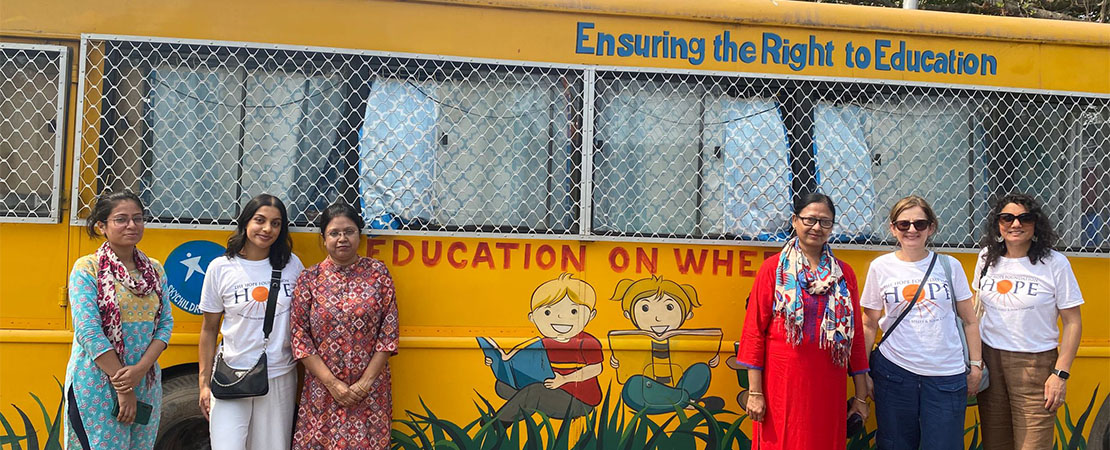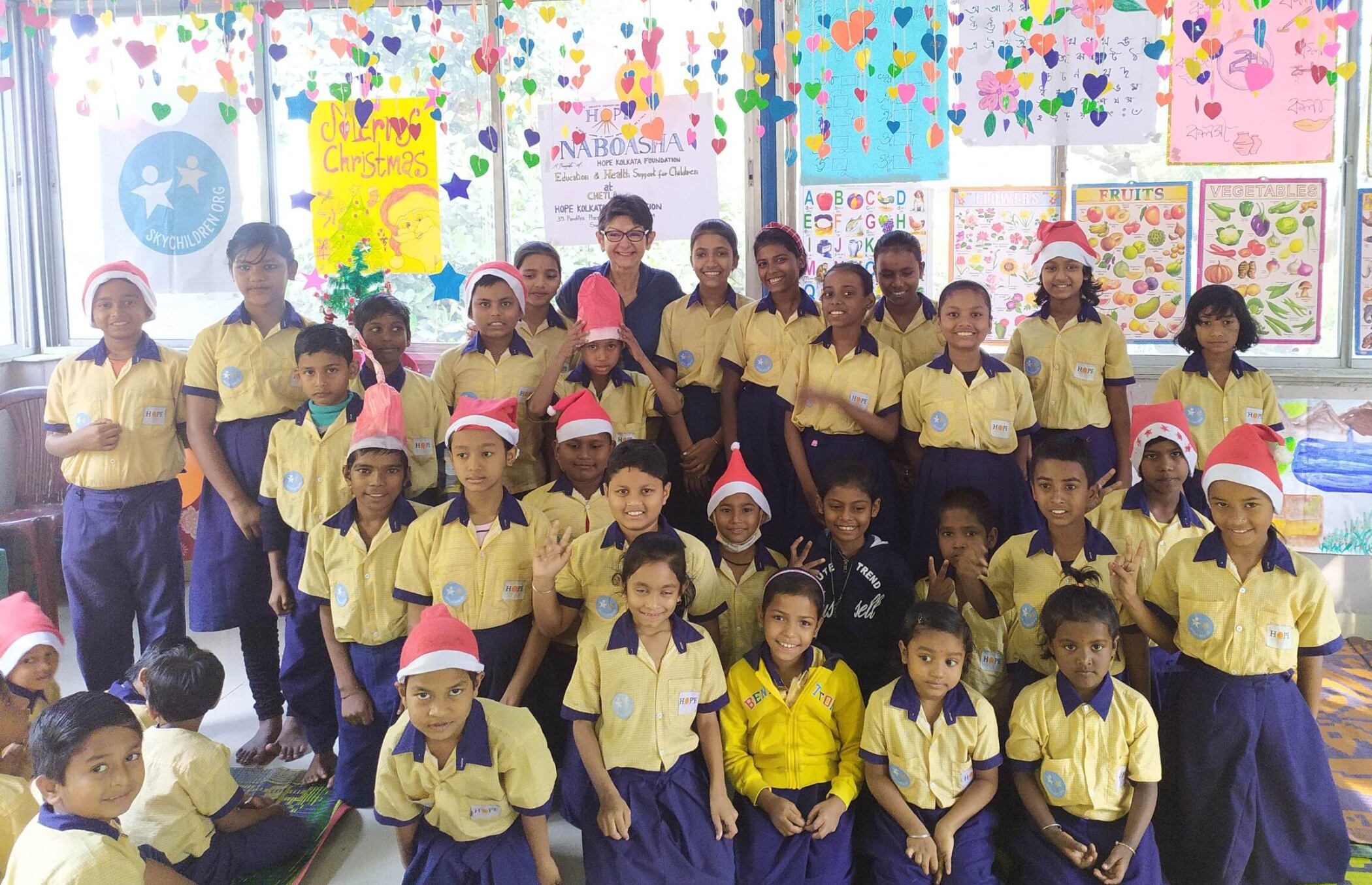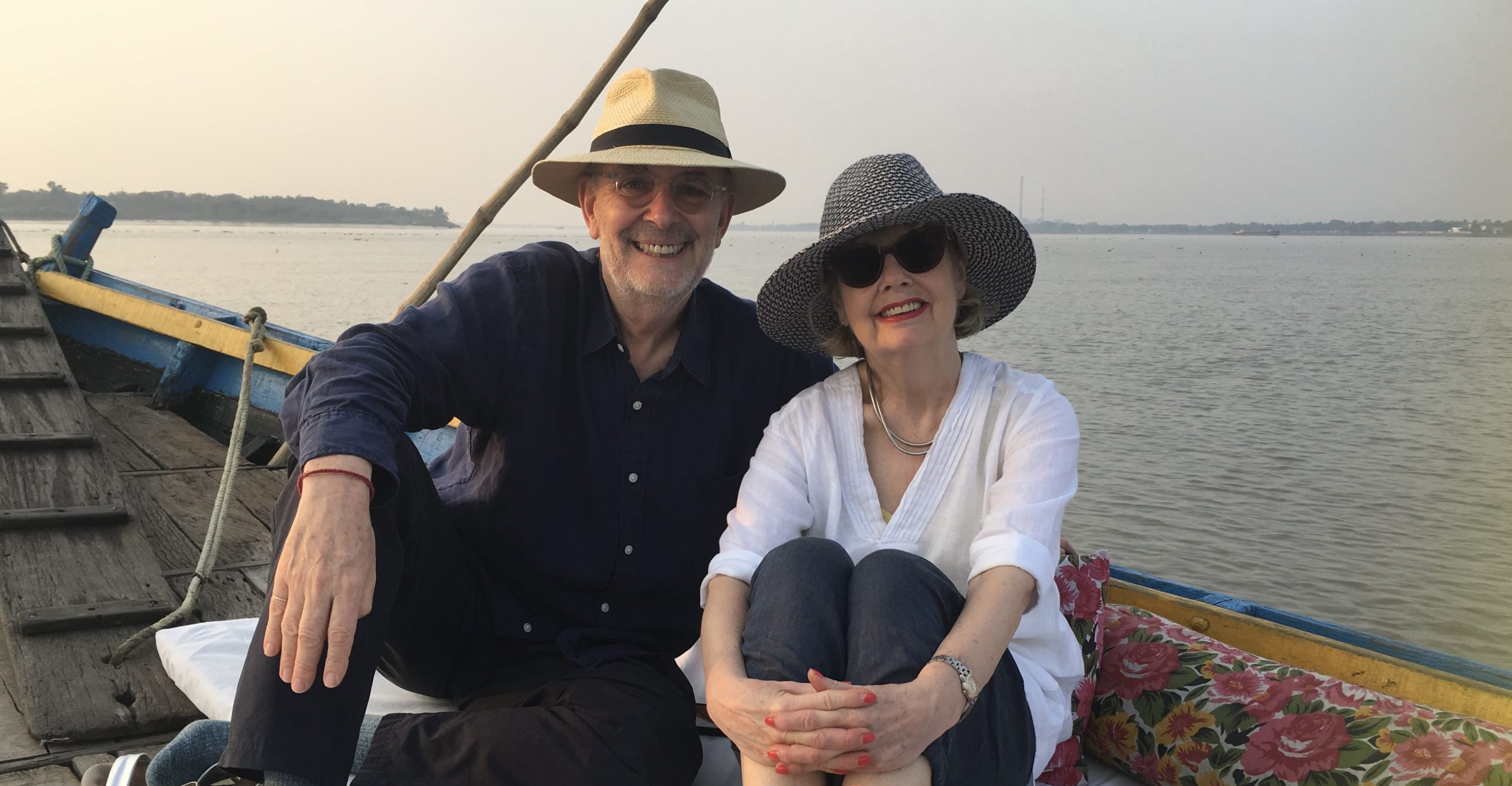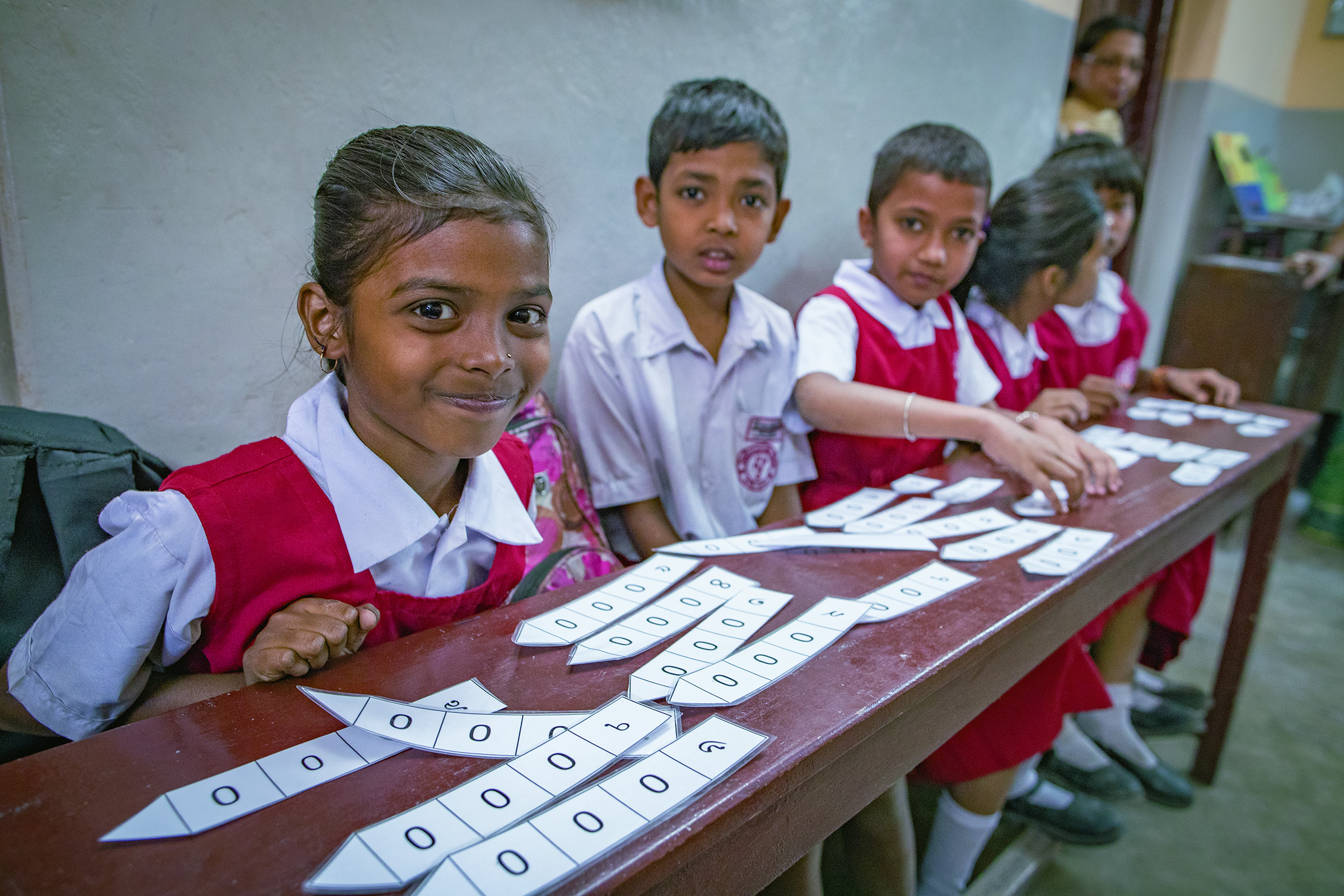|
Getting your Trinity Audio player ready...
|
Last February, I had the incredible privilege of visiting HOPE’s projects in Kolkata – a journey that left a lasting impression and strengthened my commitment to my fundraising role at The Hope Foundation for Street Children (HOPE UK).
I had spent time in India many years ago, and my love for the country had stayed with me. But this time, I was returning with a specific purpose: to witness firsthand the transformative work of The HOPE Foundation (HOPE), which is dedicated to helping street-connected children and underserved slum communities in Kolkata, West Bengal.
Arriving in India again was as vibrant and chaotic as I remembered – every sense overwhelmed by colours, sounds, sights, and smells. Kolkata, the “City of Joy,” pulsed with its own frenetic energy, a place always on the move. Yet, amidst the clamour, there was that unmistakeable quiet spirituality that pervades all of India, as though it’s a country in conversation with something far greater than itself. Sacred imagery and deities are everywhere – seamlessly woven into daily life, offering a visual reminder of India’s deep spirituality, cultural identity and history.
In just five days in Kolkata, I had the privilege of visiting 17 of the 57 life-changing projects HOPE is implementing in West Bengal. It was a jam packed schedule, only interrupted when we were stuck in gridlocked traffic.
I was joined on the visits to HOPE Projects by Seema Grantham, a long-time supporter and HOPE UK Trustee, along with her daughter Aarti, who also fundraises for HOPE UK. Together, we were able to witness the incredible work being carried out by HOPE’s team and volunteers, and the profound impact they’re having on the lives of countless individuals who are facing unimaginable hardships.
Lasting Memories
There are many moments from my trip that I will carry with me, but one that stands out vividly is a visit to a slum near the Howrah station. Around 1,500 people live in makeshift homes crafted from tarpaulin, wood, and plastic bags – dwellings set just inches from the train tracks. These homes stretch out along both sides of the tracks, and the only respite from the noise and danger comes between 21:30hrs, when the last train passes, and the early hours of the morning when the first train leaves Howrah Station.
Our visit was at night, accompanied HOPE’s mobile ambulance team, which provides essential medical care and assistance to the community. The atmosphere after dark was poignant and very moving. HOPE’s team is well-known and deeply respected – greeted warmly by name by the people they serve. As we walked along the train tracks, the stark, destitute poverty all around was overwhelming, but what struck me most was the deep sense of community and palpable ‘togetherness’ that endured despite the hardship.
I met children who exhibited a remarkable resilience. Two young girls, their hair neatly braided, held our hands and chatted freely in broken English, exuding confidence that belied their circumstances. I also saw a young boy, about nine years old, sitting on a make shift box in his school uniform, focused entirely on his homework – just inches from a bubbling cooking pot and grimy train tracks. These children were survivors of life’s harshest challenges, and were truly inspiring.
On another visit, we encountered a distressed teenage mother holding a tiny baby. She received the care and attention she so desperately needed from HOPE’s team. Later, at HOPE Hospital, we were told about another deeply traumatised young woman who was sitting motionless facing the wall, her baby cradled in her arms. It was heartbreaking to witness, but I was grateful that HOPE’s intervention meant she was now in the safe place and under the care of the medical team.
The street and slum communities in Kolkata often fall outside the healthcare system, without proper documentation to receive support. HOPE’s medical teams are, quite literally, lifelines and heroes to these vulnerable people.
The Lasting Power of HOPE's Education Projects
I visited many of HOPE’s educational initiatives, from crèches and Naboasha education centres to the Life Skills unit. Despite daily hardships, the children I met seemed eager to learn. They welcomed us with joy, curiosity, and warmth, as though their circumstances had not dimmed their innate light and potential. Many proudly showed their artwork, joyfully performed dances, or presented beautiful handmade cards. Even the shyest of children, like a little girl in a yellow dress who initially hid behind her friends before eventually gaining the confidence to sit on my lap, showed a glimmer of hope in their eyes and smile for a brighter future.
In the Bhagar slum area, we visited two of HOPE’s crèches where up to 60 children in blue and yellow uniforms learn in safe, joyful spaces – in stark contrast to the nearby rubbish dump, a mountain of festering refuse where local people, including children, scavenge for rags and scraps to survive.
One of the most innovative education initiatives I saw was the “Education on Wheels” programme in Chitpur slum, a mobile classroom in a bus bringing education directly to children in some of Kolkata’s most underserved areas.
Throughout every visit, I had the privilege of meeting HOPE’s incredible staff, whose dedication to the children in their care is evident in everything they do. I met and interviewed Meghna Ghosh, a teacher at the Chitpur crèche, for example, who radiated passion and commitment.
HOPE’s work isn’t just about providing a safe space for learning – it’s about empowering children to break free from the cycle of poverty. Many of these children are first-generation learners, and thanks to HOPE, they gain not only access to education but also the self-esteem and confidence to shape their own futures. A visit to the Life Skills café, managed by Renu Singh, highlighted the importance of skills training for young people, giving them the tools to become self-reliant and employable.
Everywhere I went, I saw vibrant displays of learning materials and achievement boards showcasing past students’ accomplishments. These visual reminders are more than just decorative – they are powerful and inspiring symbols of hope and proof that success is within reach for the younger generation.
HOPE's Legacy: A Sustainable Cycle of Change
For over 25 years, HOPE has been making a difference, and one of the most powerful aspects of its work I witnessed was the sense of connection between past and present students. Many children who have been in past programmes have come back to work, volunteer, or intern with HOPE. I met one University graduate from Mumbai who has been inspired to return to Kolkata as an intern at a Naboasha centre, and give back to children from his own childhood community. This cycle of giving back exemplifies the lasting impact of HOPE’s work. The children who once received help are now contributing to the success of the next generation – becoming leaders and change-makers in their own right.
HOPE is not just changing lives today; it’s creating a sustainable future. The young people who benefit from HOPE’s programmes are now becoming the future leaders of their communities, spreading progress in a ripple effect that will continue for generations. Witnessing this cycle of transformation was deeply inspiring and motivating, reaffirming that HOPE is indeed building a lasting legacy of change in Kolkata, India.
How You Can Get Involved - Footsteps for HOPE
Motivated by my visit, I took part in Footsteps for HOPE and raised £900 for education programmes, with support from my friends and family.
If you believe in the power of education to change the lives of street-connected children, I encourage you to join the campaign and help make a difference. Your support will provide vulnerable children in Kolkata with the education and care they need, offering them a chance for a better tomorrow.




